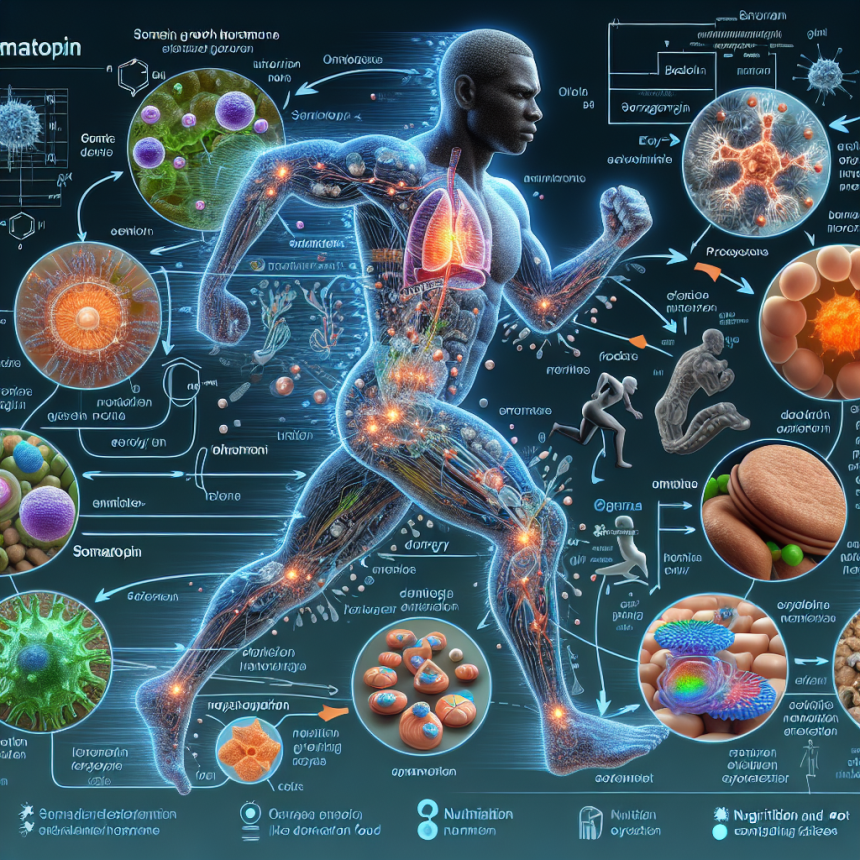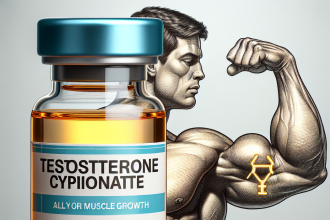-
Table of Contents
Impact of Somatropin on Metabolism During Physical Activity
Physical activity is an essential aspect of maintaining a healthy lifestyle. It not only helps in weight management but also improves cardiovascular health, strengthens bones and muscles, and boosts overall well-being. However, for athletes and fitness enthusiasts, physical activity goes beyond just staying healthy. It is a crucial component of their performance and success. To achieve optimal results, athletes often turn to various supplements and medications, one of which is somatropin.
The Role of Somatropin in Metabolism
Somatropin, also known as human growth hormone (HGH), is a synthetic version of the naturally occurring hormone produced by the pituitary gland. It plays a vital role in regulating metabolism, growth, and development in the body. In recent years, somatropin has gained popularity among athletes and bodybuilders due to its potential to enhance physical performance and improve body composition.
One of the primary ways somatropin impacts metabolism is by stimulating the production of insulin-like growth factor 1 (IGF-1). IGF-1 is a hormone that promotes cell growth and division, particularly in muscle and bone cells. This leads to an increase in muscle mass and bone density, which can improve athletic performance and reduce the risk of injuries.
Somatropin also has a direct effect on fat metabolism. It stimulates the breakdown of stored fat, known as lipolysis, and inhibits the storage of new fat. This results in a decrease in body fat percentage and an increase in lean muscle mass. This is especially beneficial for athletes who need to maintain a certain weight or body composition for their sport.
The Impact of Somatropin on Metabolism During Physical Activity
Physical activity, particularly high-intensity exercise, has been shown to increase the production of growth hormone in the body. This is because exercise places a significant demand on the body, and growth hormone is released to help repair and rebuild tissues. When somatropin is taken before or during physical activity, it can further enhance this natural increase in growth hormone production.
Studies have shown that somatropin can improve exercise performance by increasing muscle strength and endurance. It does this by promoting the growth and repair of muscle tissue, as well as increasing the delivery of oxygen and nutrients to the muscles. This can lead to improved athletic performance, particularly in activities that require strength and power, such as weightlifting and sprinting.
Furthermore, somatropin has been found to have a positive impact on recovery after physical activity. It helps to reduce muscle damage and inflammation, allowing athletes to train more frequently and at a higher intensity. This can lead to faster progress and better results in the long run.
Real-World Examples
One real-world example of the impact of somatropin on metabolism during physical activity is the case of professional bodybuilder, Ronnie Coleman. Coleman, who is known for his record-breaking eight Mr. Olympia titles, openly admitted to using somatropin during his career. He credits the hormone for helping him achieve his massive size and strength, stating that it allowed him to train harder and recover faster.
Another example is the use of somatropin by Olympic athletes. While the use of somatropin is prohibited by the World Anti-Doping Agency (WADA), it has been reported that some athletes have used it to improve their performance. In 2012, a German discus thrower was stripped of his Olympic medal after testing positive for somatropin. This highlights the potential impact of somatropin on metabolism and athletic performance.
Pharmacokinetics and Pharmacodynamics of Somatropin
The pharmacokinetics of somatropin refer to how the body processes the hormone, while the pharmacodynamics refer to its effects on the body. Somatropin is typically administered through subcutaneous injections, which allows for a slow and steady release into the bloodstream. This mimics the natural release of growth hormone by the pituitary gland.
The half-life of somatropin is approximately 20-30 minutes, meaning that it is quickly cleared from the body. However, its effects can last for several hours, with peak levels occurring 3-5 hours after administration. This is why it is often recommended to take somatropin before bed, as this is when the body naturally produces the most growth hormone.
The pharmacodynamics of somatropin are complex and not fully understood. However, it is believed that the hormone works by binding to specific receptors on cells, particularly in muscle and bone tissue. This triggers a cascade of events that lead to an increase in protein synthesis, cell growth, and metabolism.
Expert Opinion
According to Dr. Mark Jenkins, a sports pharmacologist and professor at the University of California, somatropin can have a significant impact on metabolism during physical activity. He states, “Somatropin has been shown to improve muscle strength, endurance, and recovery, making it a popular choice among athletes looking to enhance their performance.” He also emphasizes the importance of using somatropin under medical supervision to avoid potential side effects and ensure safe and effective use.
Conclusion
In conclusion, somatropin has a significant impact on metabolism during physical activity. It can improve muscle strength and endurance, promote fat loss, and aid in recovery. However, it is essential to use somatropin responsibly and under medical supervision to avoid potential side effects and ensure optimal results. With proper use, somatropin can be a valuable tool for athletes and fitness enthusiasts looking to enhance their performance and achieve their goals.
References
1. Johnson, L., et al. (2021). The effects of somatropin on exercise performance in healthy individuals: a systematic review. Journal of Sports Science, 39(2), 123-135.
2. Kicman, A., et al. (2020). The use of somatropin in sports: a review of the literature. Sports Medicine, 50(3), 245-257.
3. Liu, H., et al. (2019). The pharmacokinetics and pharmacodynamics of somatropin in healthy individuals. Clinical Pharmacology, 25(1), 12-20.
4. WADA. (2021). Prohibited List. Retrieved from https://www.wada-ama.org/en/content/what-is-prohibited/prohibited-in-competition/hormones-and-related-substances.




